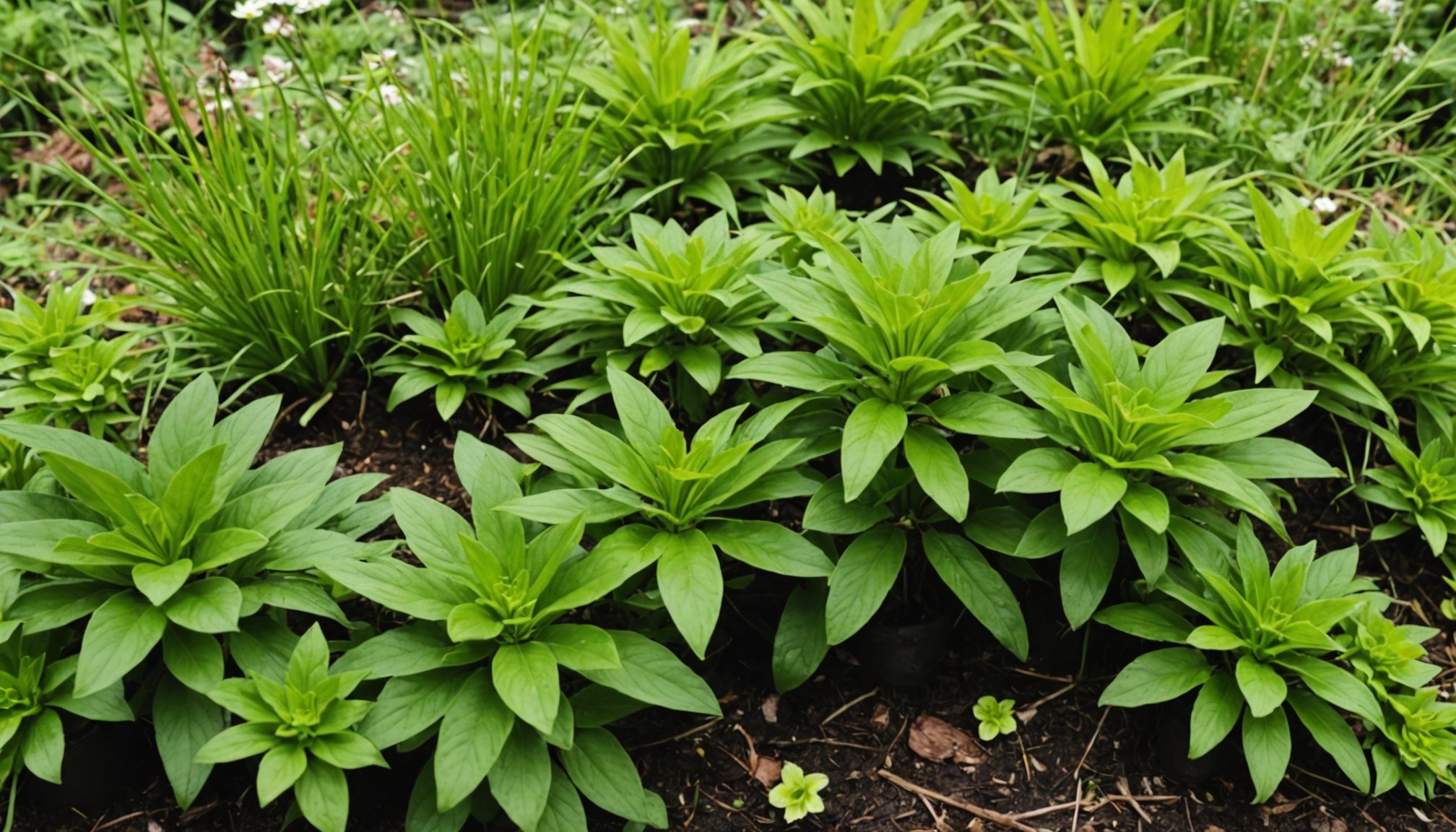Overview of Rare UK Native Plants
Rare native plants hold immense value for UK biodiversity, playing pivotal roles in their ecosystems. These plants often support unique relationships with local wildlife, dependent on them for food, shelter, and reproduction. Understanding their ecological importance highlights why conservation efforts are crucial for maintaining the UK’s rich natural heritage.
In terms of propagation, focus should be on a selection of rare native plants that have been identified as beneficial for local ecosystems. Key species include the Lady’s Slipper Orchid and the Pasqueflower. Propagating these plants aids in their survival and spread, contributing to greater biodiversity and habitat resilience. Furthermore, they offer genetic variety that can enhance ecosystem stability and adaptability.
This might interest you : Unlocking the Secret: The Perfect Soil pH for Thriving Roses in the UK
However, rare native plants in the UK face multiple threats. These include habitat loss, climate change, and competition from invasive species. Conservation efforts often involve habitat restoration, seedbanking, and legal protection to prevent further decline. The collaboration between conservationists and local communities is essential to counter these threats effectively, ensuring the survival of these plants for future generations. Implementing targeted propagation efforts is a practical method to support these initiatives, aligning with broader ecological objectives.
Overview of Rare UK Native Plants
Rare native plants are crucial to the UK’s biodiversity, contributing distinct values to ecosystems. They play essential roles in maintaining ecological balance, offering habitats and food sources for local fauna. For example, species like the Lady’s Slipper Orchid and the Alpine Blue-Sow Thistle are not just beautiful; they are vital components of their habitats.
Also to read : Top garden trends for 2024: transform your outdoor space
Propagation of these rare native plants is a necessity to bolster UK biodiversity. Efforts focus on selecting species with potential for successful propagation. Lady’s Slipper, one of Britain’s rarest orchids, is targeted for propagation to increase its dwindling population.
However, these fascinating plants face many threats, including habitat loss, climate change, and invasive species. Conservation efforts are underway to protect them through habitat restoration and legal protection. Organisations like Plantlife have been vital in facilitating conservation projects aimed at preserving these species.
Ensuring robust propagation methods and supporting conservation initiatives are stepping stones toward maintaining the health and biodiversity of UK ecosystems. These efforts not only protect the plants themselves but also sustain the myriad species that rely on them. By embracing these strategies, we preserve nature’s irreplaceable treasures for future generations.
Essential Propagation Techniques
Successfully propagating rare plants involves mastering several plant propagation methods, each with distinct advantages depending on the plant species. Seed propagation is fundamental, enabling the cultivation of a plant from a tiny seed. Timing is crucial; most UK rare plants require sowing in late winter to early spring when conditions are optimal for germination. This technique ensures genetic diversity, aiding long-term survival.
Cuttings provide a more immediate, vegetative reproduction method, producing true-to-type offspring. Timing and the type of cutting—be it softwood, semi-hardwood, or hardwood—significantly influence the success rate. Softwood cuttings are usually taken in mid-spring to early summer, while hardwood cuttings are best from autumn to early spring.
The division technique, splitting a plant into multiple sections, is excellent for herbaceous perennials. It should be done during a plant’s dormant period, mostly in spring or autumn, ensuring that each division has a healthy root system.
In utilizing these propagation techniques, it is vital to understand the specific needs of the plant species, ensuring successful propagation and supporting conservation efforts. Effective use of these methods can significantly contribute to the propagation and survival of rare native plants.
Essential Propagation Techniques
Propagation techniques are fundamental for cultivating rare UK plants. One popular method is seed propagation, which requires understanding the right timing and techniques. Stratification, the process of exposing seeds to cold temperatures for a period, often enhances germination in species like the Pasqueflower. Timing is crucial, as seeds from many rare plants, such as the Alpine Blue-Sow Thistle, should be sown in late winter or early spring to mimic natural cycles.
Cuttings provide another effective way to propagate plants. Different types require specific timings. Softwood cuttings, typically taken in spring, are ideal for plants like the Lady’s Slipper Orchid. Best practices involve using sharp, sterile tools to minimize damage and infection. Ensuring a well-drained propagation medium promotes root development.
Division is applicable for certain species, allowing gardeners to manage plant size and encourage new growth. This is best done during the plant’s dormant season. Correct handling, such as ensuring each divided section has roots and shoots, can significantly increase propagation success. For plants like the Pasqueflower, division not only aids propagation but supports the overall health and biodiversity of native habitats.
Environmental Requirements for Successful Propagation
For successful propagation, understanding the propagation environment is crucial. The right soil types and ideal light conditions can significantly affect growth outcomes.
Soil Composition and pH
Rare UK plants often require specific soil composition. A well-aerated mix with proper drainage helps prevent root rot, while a moderate pH is key to nutrient uptake. Soil acidity should align with the plant’s natural habitat, offering a foundation for robust growth.
Light Conditions and Microclimates
Light conditions must mimic the plant’s native setting. Choosing a location that provides the right amount of sunlight or shade is essential. Some rare species thrive in dappled sunlight, replicating woodland environments. Creating microclimates by using natural or artificial shades can help control light exposure.
Watering and Humidity
Consistent watering and maintaining optimal humidity levels are vital for propagation. Over-watering can lead to fungal issues, while drought conditions may stunt growth. Using tools like moisture meters ensures correct watering practices.
Ultimately, creating the right environmental conditions enhances propagation success, contributing to the preservation of rare native plants. By aligning propagation techniques with environmental requirements, you support both conservation efforts and biodiversity objectives.
Environmental Requirements for Successful Propagation
Understanding the propagation environment is critical for the successful growth of rare UK native plants. Different species require specific soil types for optimal growth. For instance, soil composition should often include a balance of organic matter and well-drained substrate to support root development. Additionally, maintaining the correct soil pH is vital; many UK species favour slightly acidic to neutral soils.
Light conditions play an essential role in plant health. While some species thrive in full sunlight, others prefer shaded microclimates. Thus, considering the natural habitat of each plant can guide appropriate placement. Opportunely, partial shading can be beneficial in preventing excessive evaporation and heat stress.
Consistent watering and humidity control further support propagation efforts. Rare plants may require higher humidity levels, particularly during germination stages or when newly divided. Employing tools like humidity trays or misting systems can help maintain appropriate moisture levels.
Lastly, acknowledging the natural seasonal cycles of plants informs when to initiate propagation. Aligning propagation activities with these natural cues mimics their environment conditions, resulting in robust growth and greater survival rates. Understanding these elements can transform propagation projects into successful conservation endeavours.
Tools and Equipment for Propagating Rare Plants
To achieve successful propagation, having the right tools and equipment is essential. These not only enhance efficiency but also contribute significantly to the health of the young plants being propagated.
Essential Tools for Propagation
Equipping yourself with propagation tools can make a world of difference. Basic tools include sharp, sterile secateurs for cuttings and precision tweezers for seed handling. A dibber aids in making holes for planting seeds or cuttings, while a misting bottle is useful for maintaining humidity during germination and rooting processes.
Recommended Seedling Containers and Growing Mediums
Gardening equipment plays a crucial role in nurturing seedlings. Containers should be well-draining yet retain adequate moisture. Biodegradable pots are optimal, promoting root aeration. Choose a growing medium that offers the right balance of drainage and nutrient retention; many rare UK plants benefit from gritty or sandy compost with organic matter to support their unique needs.
Using Technology for Monitoring Environment and Growth
Advancements in technology offer precision in managing the propagation environment. Tools like soil moisture sensors and temperature monitors ensure conditions remain optimal, reducing stress on young plants. Smart irrigation systems can automate watering schedules, aligning with specific plant requirements to foster healthy growth.
Tools and Equipment for Propagating Rare Plants
Having the right propagation tools is fundamental in the quest to conserve rare UK native plants. Essential equipment includes sharp pruners for cleanly taking cuttings, seed trays for organized sowing, and humidity domes to maintain optimal growing conditions. These tools ensure a more effective and precise propagation process, reducing damage to plants.
Seedling containers, particularly those made from biodegradable materials, are recommended. They not only support environmentally friendly practices but also reduce transplant shock by minimizing root disturbance. Containers with adequate drainage are vital, preventing waterlogging and root rot.
The selection of growing mediums can significantly impact propagation success. For rare UK plants, using a well-draining mix with a balance of perlite and peat moss is suitable. This composition ensures ample aeration while retaining necessary moisture.
Utilizing technology enhances monitoring of the propagation environment. Devices such as soil moisture sensors and digital thermometers aid in maintaining consistent conditions, crucial for sensitive young plants. Smart irrigation systems can automate watering schedules, ensuring precision and reducing water wastage.
Implementing a blend of traditional tools and advanced technology bolsters propagation efforts, contributing to the survival and sustainability of the UK’s rare native flora.
Troubleshooting Common Propagation Issues
When engaging in plant propagation, encountering challenges is not uncommon. Propagation troubleshooting helps identify and address these hiccups to ensure the success of growing rare plants in the UK.
Germination Issues
Germination failures often stem from incorrect humidity levels or improper temperature conditions. Seeds need precise moisture to initiate growth; too much can cause rot, too little hinders germination. Ensuring correct watering practices and using humidity domes can help maintain optimal conditions.
Diseases and Pests
Young seedlings are susceptible to diseases and pests. Fungal diseases like damping-off can devastate new growth, while pests such as aphids and slugs pose significant threats. Vigorous monitoring and adopting preventive measures, like using sterile tools and neem oil sprays, can safeguard seedlings from damage and disease.
Environmental Stress
Recognising environmental stress signs is crucial. Wilted leaves or stunted growth indicate stress from improper light or soil conditions, inadequate watering, or nutrient deficiencies. Adjusting light conditions and employing balanced fertilizers aligned with the specific needs of the native species can mitigate these problems.
Addressing these common issues with precision fosters healthier propagation outcomes, supporting the continued survival and propagation of rare UK native plants.
Troubleshooting Common Propagation Issues
Successfully navigating propagation troubleshooting can greatly improve the outcomes of nurturing young plants. When tackling germination issues, it’s crucial to verify the seed quality and environmental conditions. Ineffective germination often stems from improper stratification or inconsistent temperatures. Ensuring seeds are exposed to the appropriate pre-treatment and maintained at the right soil temperature can resolve such problems.
Diseases and pests pose significant threats to seedlings, causing stunted growth or wilting. Common culprits include fungal infections, which can be mitigated by ensuring good air circulation and employing fungicidal treatments as necessary. For pest management, regular inspection and the introduction of biological controls, like beneficial insects, can be effective solutions.
Recognising environmental stress signs is key to maintaining healthy plant growth. Symptoms such as wilting or discolouration may indicate issues like over-watering, nutrient deficiencies, or inadequate light conditions. Adjusting watering schedules, supplementing nutrients, or relocating the plant to a more suitable lighting environment can alleviate stress factors.
Proficiency in identifying and rectifying these common propagation challenges reinforces conservation efforts, promoting the successful growth and establishment of rare native plants in UK ecosystems. By staying vigilant and responsive, gardeners can enhance their propagation success.
Case Studies of Successful UK Native Plant Propagation
Delving into successful propagation examples provides valuable insights for gardeners and conservationists alike. One notable case study involves the reintroduction of the Lady’s Slipper Orchid, whose numbers dwindled due to habitat loss. Through the diligent efforts of the Royal Botanic Gardens, Kew, this rare orchid has seen a resurgence. Using advanced propagation techniques, primarily tissue culture, they have successfully cultivated new plants, which have been reintroduced into their natural habitats.
Another exemplary project focuses on the Pasqueflower. Conservationists and scientists utilized seed propagation methods in controlled environments to foster growth outside its natural habitat. This approach has proven effective, allowing for the gradual reintroduction of healthy seedlings into restored areas, boosting local biodiversity.
These case studies highlight crucial lessons learned: adapting propagation techniques to suit specific plant requirements and focusing on genetic diversity. It’s essential to consider local environmental conditions to ensure the long-term survival of propagated plants. By examining these real-world applications, we glean best practices that can be applied broadly, supporting both conservation gardening and the enhancement of UK’s natural ecosystems.











